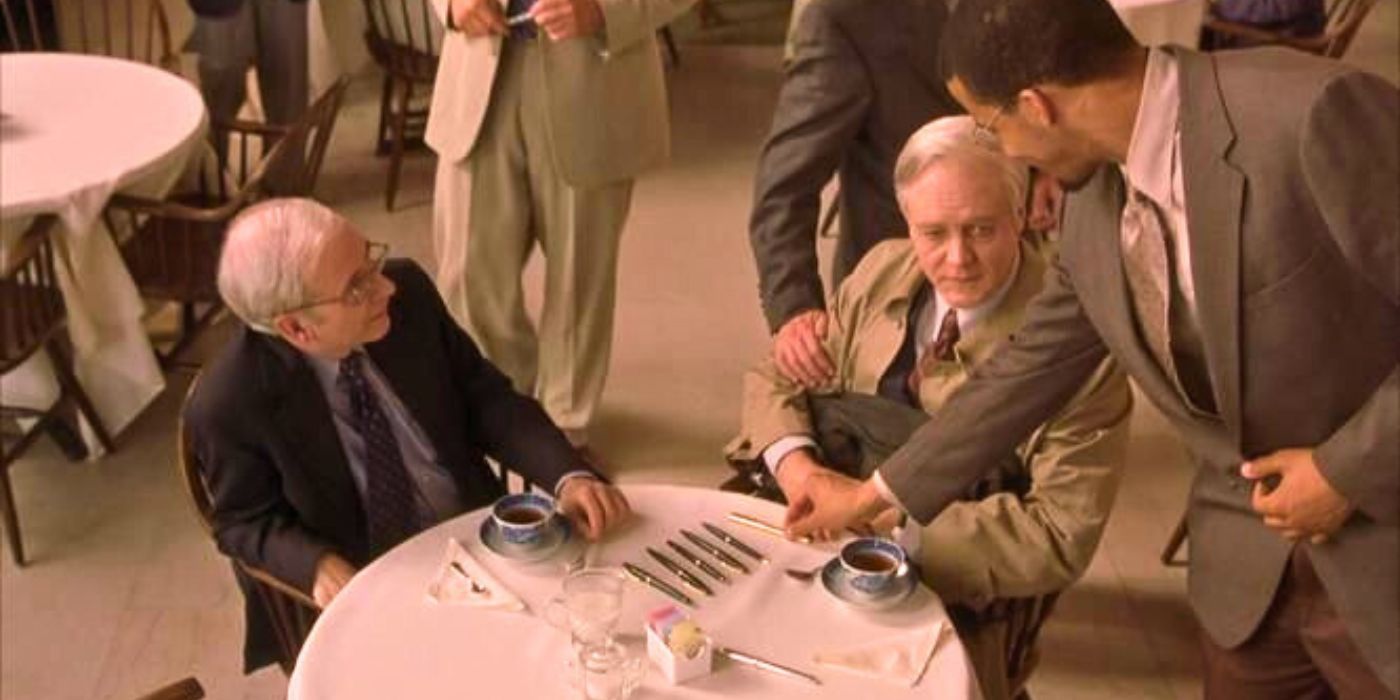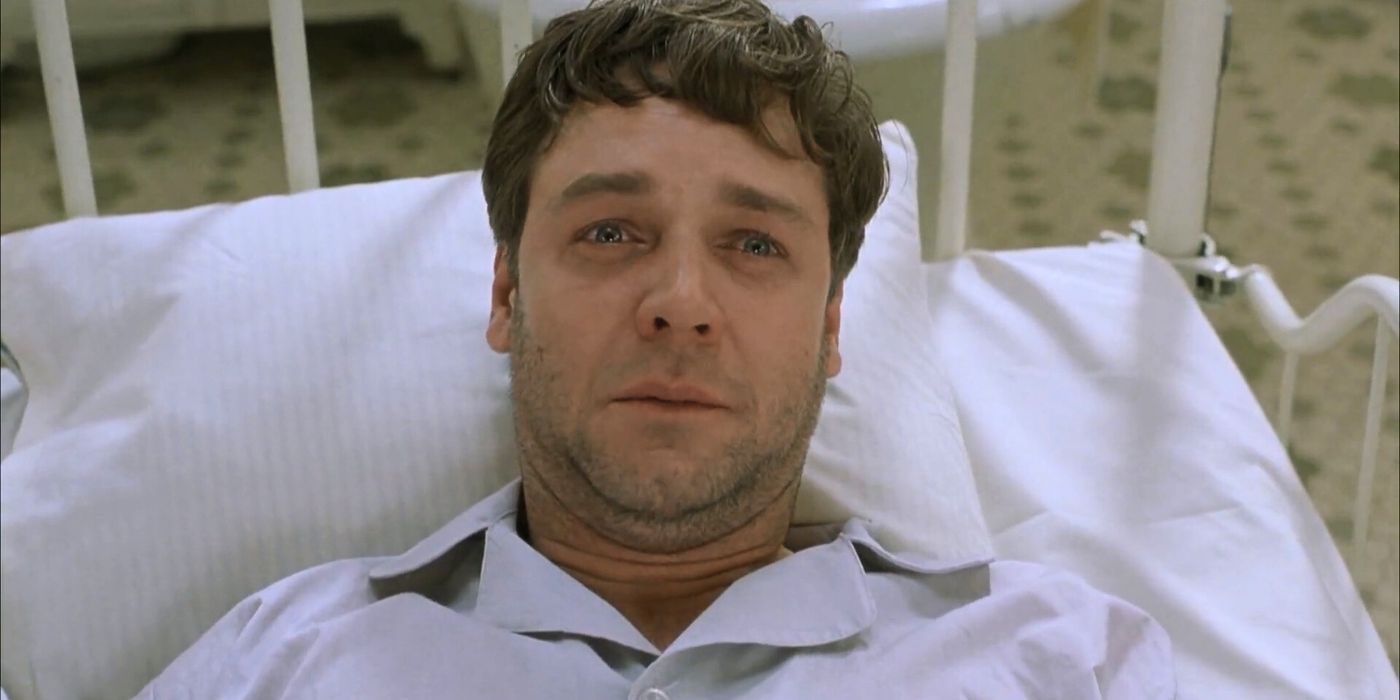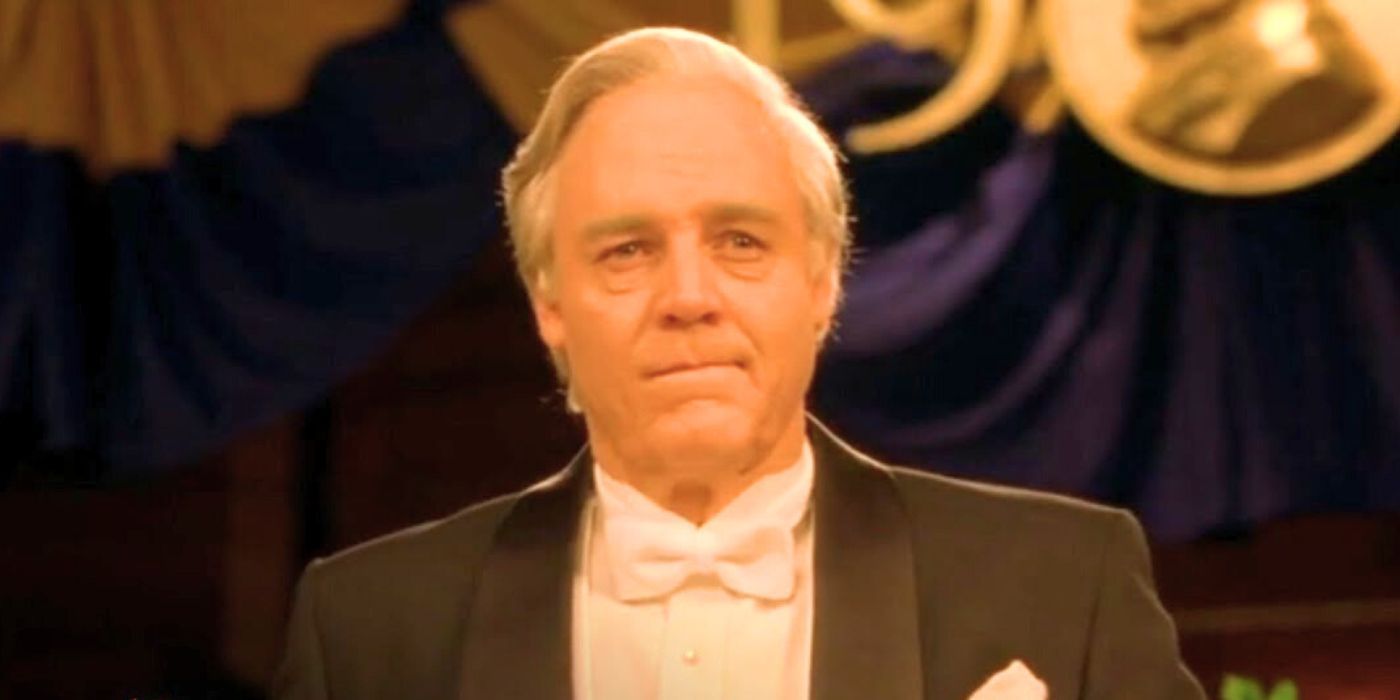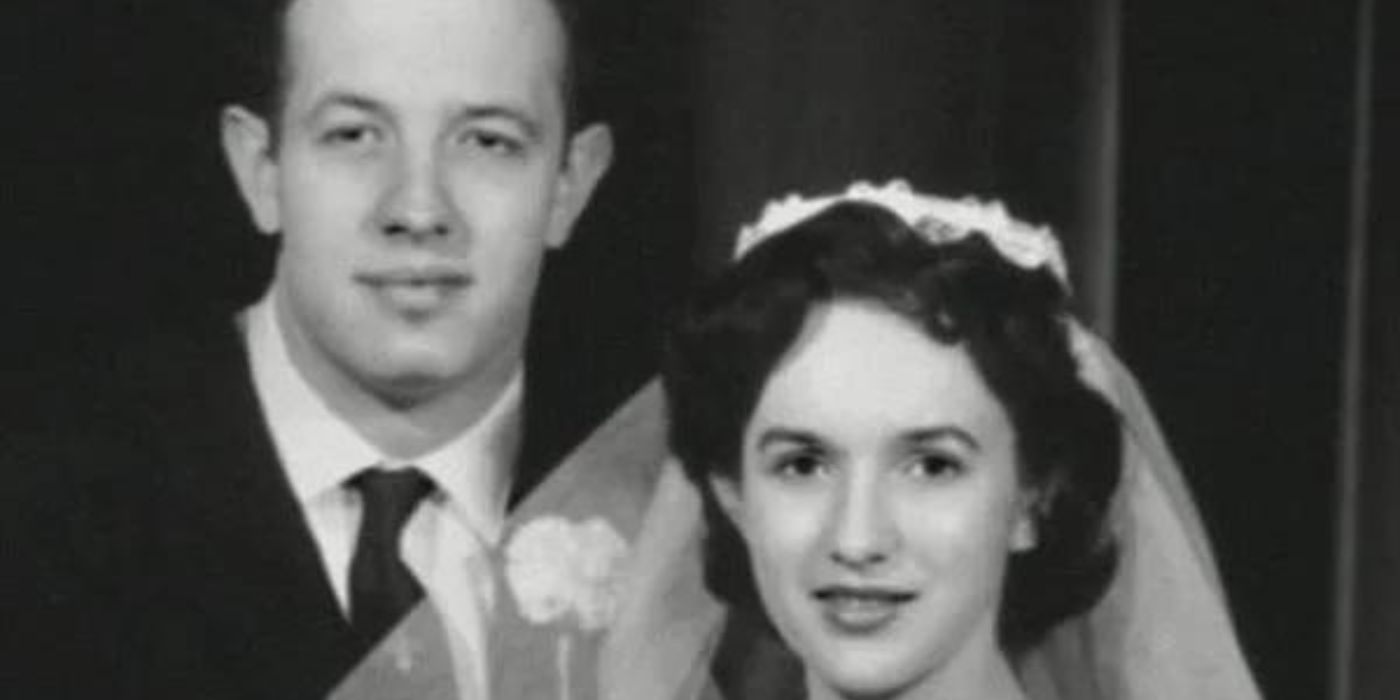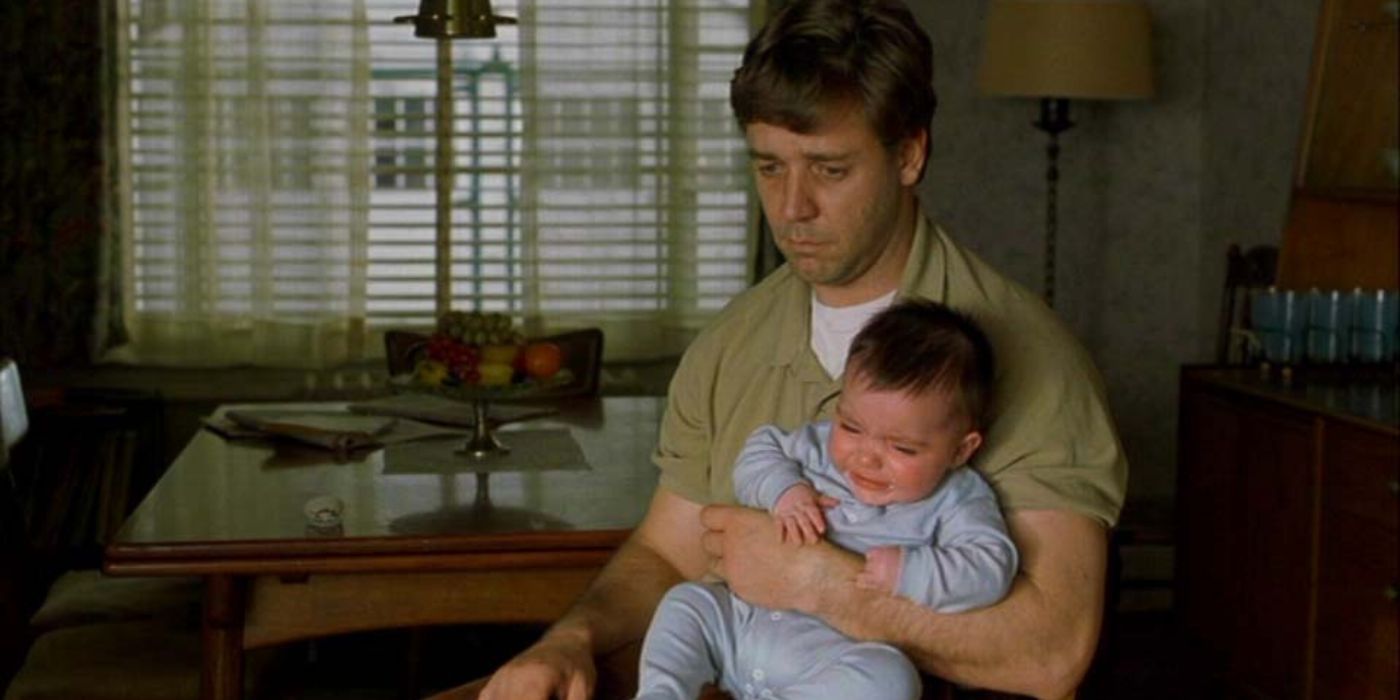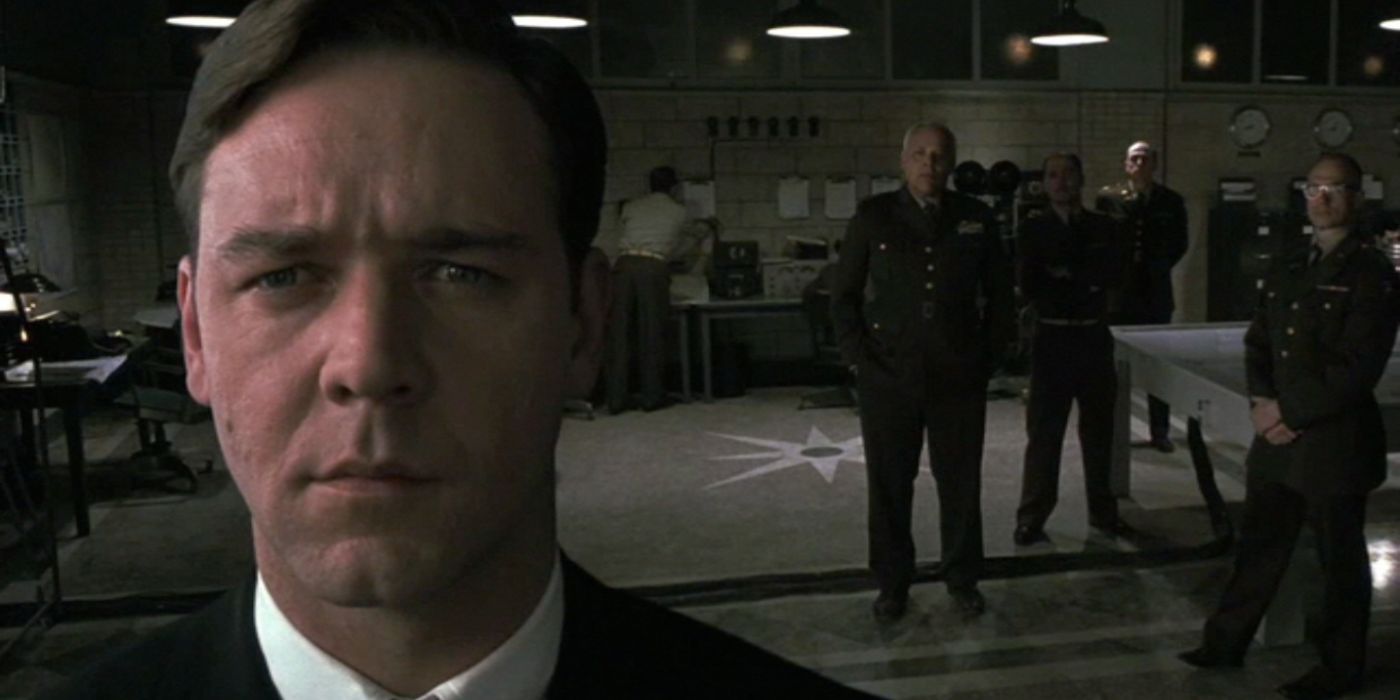Summary
- A Beautiful Mind exaggerated John Nash's hallucinations, as most individuals with schizophrenia do not experience life-like people as depicted in the movie.
- The pen ceremony at Princeton, where Nash is honored by his professors, was completely fabricated for the film, although it symbolizes his acceptance and recognition among his mathematical peers.
- The movie inaccurately portrays Nash's medication usage, as he actually stopped taking medication in 1970, while the film suggests he took newer medications in 1994.
A Beautiful Mind dramatizes the true story of mathematician John Nash, a Nobel Laureate in Economics who was known for his pioneering contributions to game theory. Directed by Ron Howard and starring Russell Crowe as Nash, the movie focuses on his time as a gifted Princeton student and how he went down a nightmarish spiral after working as a cryptographer for the CIA. It also delves into the strained relationship that Nash had with his wife Alicia, played by Jennifer Connelly. Written by Akiva Goldsman, A Beautiful Mind's screenplay was adapted from Sylvia Nasar's acclaimed 1998 biography of the same name.
The biopic was nominated for eight Oscars and won four, including Best Picture. Howard was named Best Director, Connelly won Best Supporting Actress, and Goldsman went home with the Academy Award for Best Adapted Screenplay. With the script exploring Nash's mental health struggles, A Beautiful Mind easily earned a spot among the best movies about tortured geniuses. For the sake of creative liberties, though, Nash's asocial personality and schizophrenia diagnosis are wrought with factual inaccuracies, and A Beautiful Mind has been criticized for everything it changes and leaves out from the true story.
A Beautiful Mind is available to stream on Netflix.
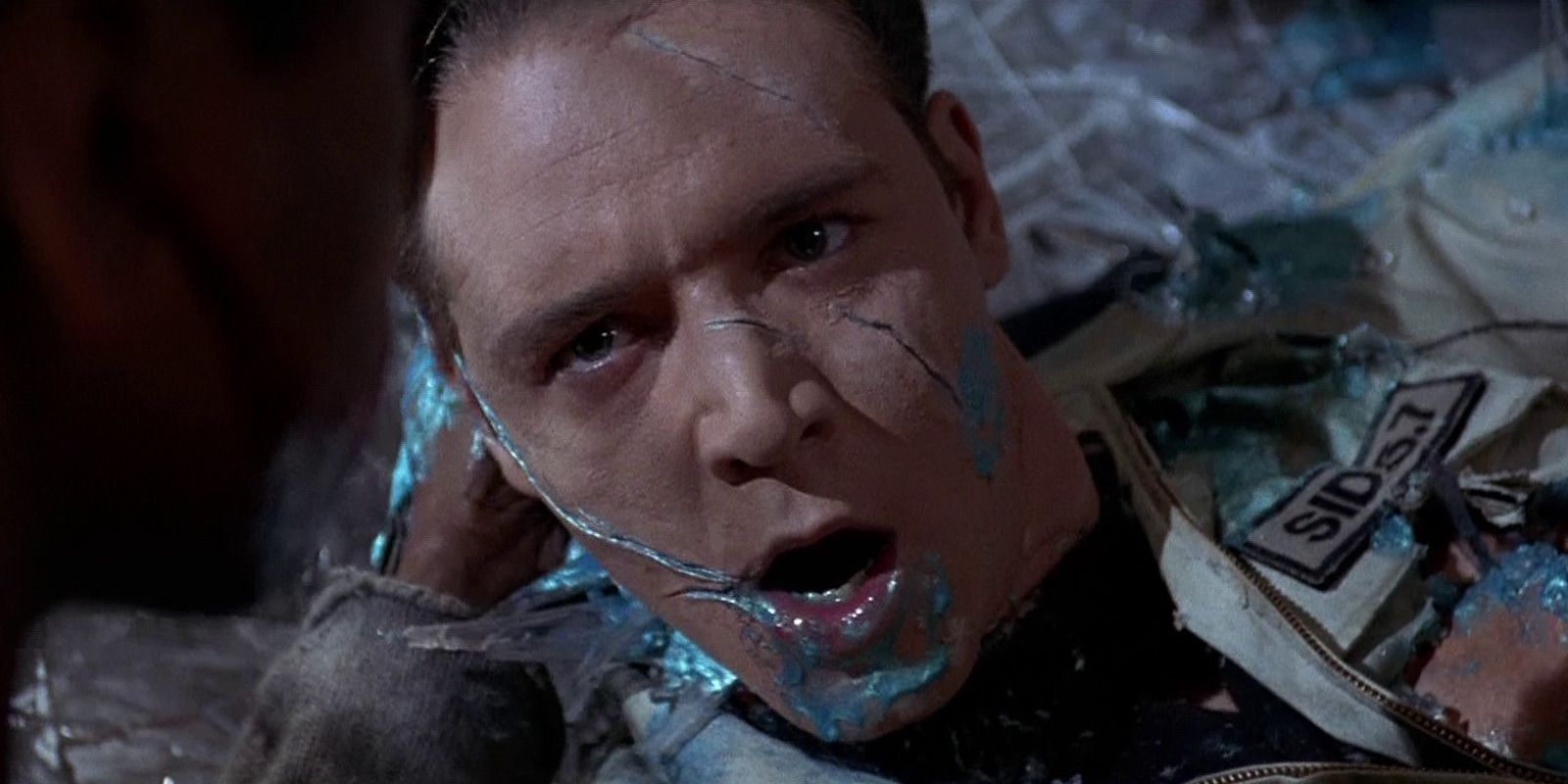
The 14 Best Russell Crowe Performances Of All Time
Best known for his trademark intensity, Oscar winner Russell Crowe has delivered numerous memorable characters over the years. Here are his best.John Nash Did Not See Imaginary People
A Beautiful Mind Exaggerated The Real John Nash's Hallucinations
Upon being told that he has schizophrenia, John Nash is revealed to have been talking to people who existed only in his imagination. These include his Princeton roommate Charles, Charles's niece Marcee, and the ominous Department of Defense official William Parcher. However, this hallucinatory element is overdramatized in A Beautiful Mind.
"The movie's portrayal of Dr. Nash seeing and conversing with life-like 'people' is not what most individuals with schizophrenia experience," psychiatry professor Dr. Steve Lamberti told ABC News. Dr. Tim Johnson added that schizophrenics with visual hallucinations tend to see figures in distorted or "cartoonish" forms as opposed to the realistic depiction shown in A Beautiful Mind.
The Pen Ceremony At Princeton Didn't Happen
One Of The Most Memorable Scenes In A Beautiful Mind Was Made Up
What makes A Beautiful Mind one of Russell Crowe's best movies is the empathy and nuance with which the actor plays Nash. For instance, in the scene where mathematics professors of Princeton University ritualistically present their pens to an aged Nash, Crowe's emotionally-charged expressions are praise-worthy. But no such event ever took place.
The official website of the Princeton University Library states that "no such custom exists" and the scene was "completely fabricated in Hollywood." However, the website does acknowledge the importance of the scene as it symbolizes that Nash was accepted and recognized by his mathematical peers for his achievements.
John Nash Did Not Take Medication From 1970 Onwards
A Beautiful Mind Changed John Nash's Views On Psychiatric Drugs
In A Beautiful Mind, John Nash refuses to take medication for his schizophrenia after a few nightmarish experiences. But in a scene set in 1994, he says, "I take the newer medications." This is another factual difference between A Beautiful Mind and the true story, as Sylvia Nasar's biography claims Nash stopped taking medication in 1970.
While Ron Howard has made movies that are historically accurate, such as Apollo 13, A Beautiful Mind falters with such inaccuracies. In the movie's DVD commentary, Howard justifies the creative liberty taken with the medication as a decision to ensure that A Beautiful Mind isn't misinterpreted for suggesting people with schizophrenia don't ever require medication.
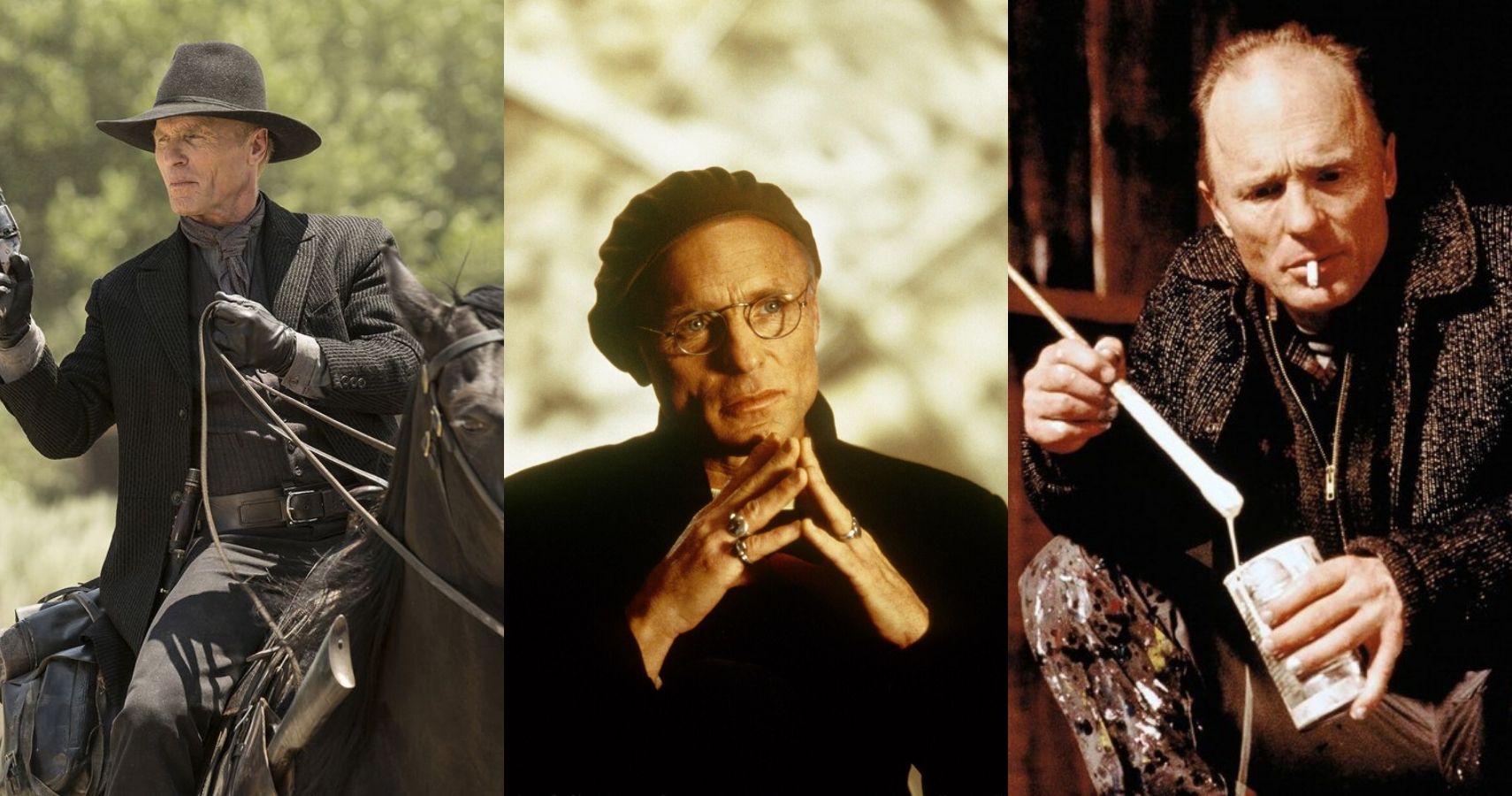
Ed Harris's 10 Greatest Roles, Ranked
Ed Harris has been in the acting industry for over four decades. Let' look at some of his most prominent roles.The Nobel Prize Acceptance Speech Didn't Happen
John Nash Never Gave A Speech When Accepting His 1994 Award
John Nash and his fellow game theorists John Harsanyi and Reinhard Selten were collectively awarded the 1994 Nobel Prize in Economics. In one of A Beautiful Mind's most dramatic scenes, Nash gives a moving speech where he dedicates his Nobel to his wife. This moment was even parodied in and inspired one of the theories about I'm Thinking of Ending Things.
However, contrary to what is shown in A Beautiful Mind, the real John Nash never delivered a speech after accepting his award. The actual video footage retained by The New York Times shows Nash as just receiving his award in Stockholm and bowing to an applauding audience.
The Wheeler Laboratory At MIT Is Fictional
A Beautiful Mind Created The Facility For The Movie
After obtaining his doctorate from Princeton, Nash is shown to accept a position as an instructor at MIT. While this plot point aligns with the true story behind A Beautiful Mind, his faculty at MIT is a fictional creation. The film's version of Nash is shown to be assigned to MIT's prestigious Wheeler Laboratory where he can pursue mathematical research.
However, as Professor Isadore M. Singer told MIT News, "There is not and never has been any Wheeler Lab at MIT." Instead, the real John Nash was invited to the university as a C.L.E Moore Instructor, a job title offered by MIT's Math department to Ph.D.s with potential in mathematics research.
John Nash Probably Had Homosexual Experiences
A Beautiful Mind Didn't Fully Address John's Sexuality
While John Nash and Sylvia Nasar assert that he was not gay, the book of A Beautiful Mind does point to some homosexual encounters. According to Slate, Nasar wrote that Nash attempted to "make a pass" at a male friend by climbing into his bed when he was sleeping. Similarly, Nasar says that Nash might have felt "something very close to love" with fellow mathematician John Milnor.
The Slate article also mentions that Nash kissed another friend named Donald Newman on the mouth even though Newman didn't reciprocate. Nasar's book mentions another experience of "mutual attraction" with a man. The adaptation omits Nash's complicated feelings for other men.

Top Gun: Maverick — Jennifer Connelly's Best Movies, According To IMDb
Jennifer Connelly scored one of her biggest critical hits with Top Gun: Maverick, but her filmography includes many films with high IMDb ratings.A Beautiful Mind Skips Over Alicia & John Nash's Divorce In 1963
The Romance Aspects Of A Beautiful Life Were Heavily Altered
One of the worst inaccuracies in biopics is the addition of heartwarming scenarios instead of sad realities. This occurs in A Beautiful Mind with the portrayal of Alicia Nash as a constant part of John Nash's life while ignoring their divorce. The real Alicia was an aspiring physicist, but she gave up her professional goals to support her husband and became a mental health advocate. Marrying in 1957, the couple divorced in 1963. Slate reports that Nash still lived with his then-ex-wife as a "boarder." The two remarried in 2001 just before the movie's release. So, Alicia being present in scenes like the Nobel ceremony wouldn't have happened.
John Nash Had A Child With Another Woman
A Beautiful Mind Ignores John Nash's Affair
John and Alicia Nash had one child together in 1959, a son christened John Charles Martin Nash. However, a few years before his marriage, 25-year-old Nash had a child with a Boston nurse called Eleanor Stier. She bore Nash a son named John David Stier in 1953, but Nash refused to care for either the child or his mother. According to Slate, John David was put in foster care and Stier had to hire a lawyer in 1956 to get Nash to pay child support. Barring a 17-year estrangement, Nash and John David still communicated through letters and occasionally met in person.
John Nash Didn't Foil Any Soviet Schemes
The Real Nash Worked For RAND
When he's hired by the imaginary Pentagon official William Parcher in A Beautiful Mind, John Nash uses his mathematical skills to decipher Soviet codes. With this undercover work executed in his imagination, Nash grows paranoid thinking Soviet spies are after him.
Delving away from Nash's hallucinatory visions, the true story behind A Beautiful Mind suggests Nash did actually indulge in work related to national defense and security. But as stated in The Guardian, he was not attached directly to the Pentagon but served as a consultant for the RAND Corporation instead. RAND is a non-profit think tank that indulges in national security research and receives funding from the U.S. government.
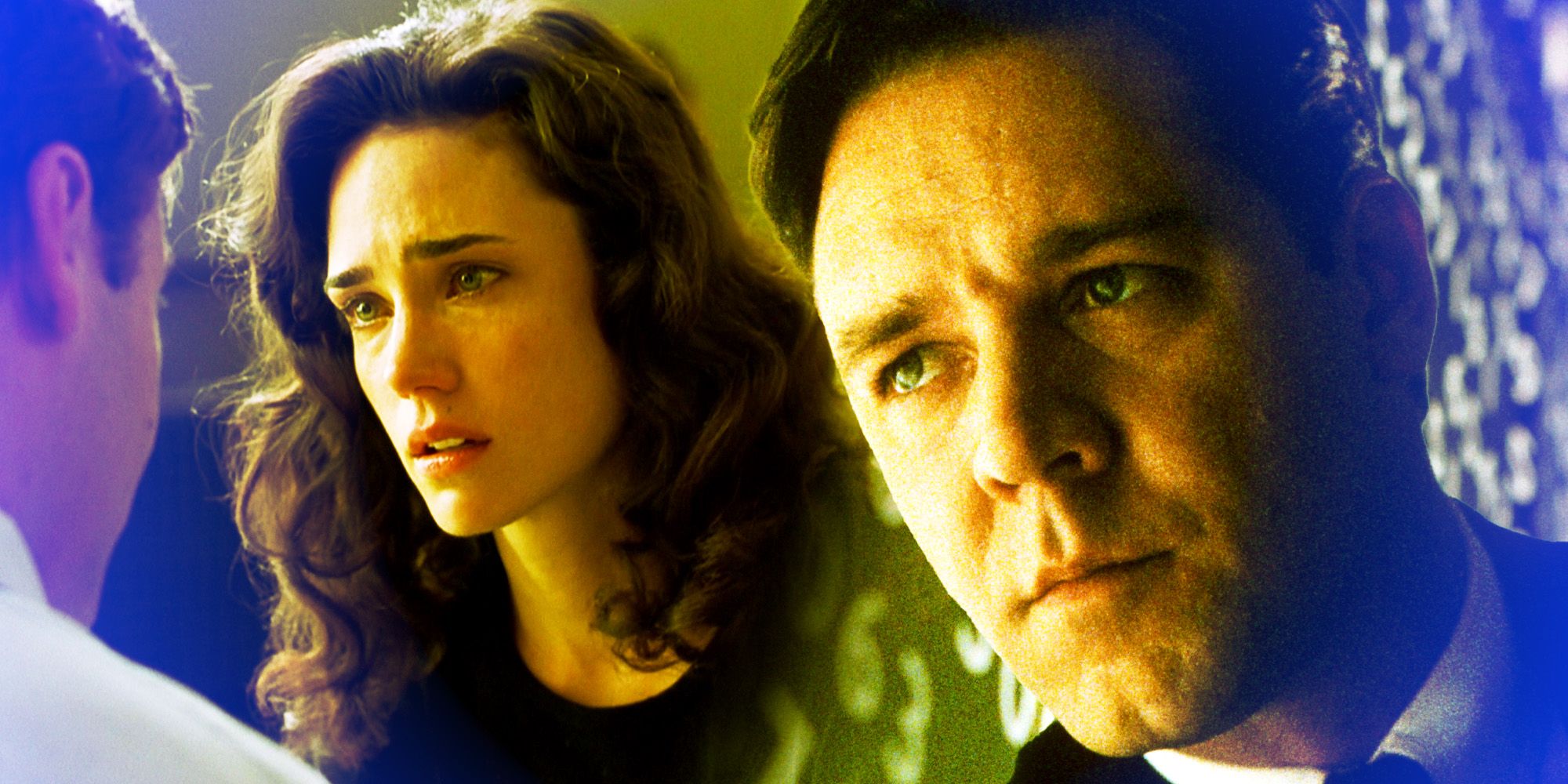
A Beautiful Mind Ending Explained
A Beautiful Mind is the partially-true story of Nobel Prize winning mathematician John Nash (Russel Crowe) and his struggle with schizophrenia.A Beautiful Mind Doesn't Include All Of John Nash's Revolutionary Work
The Movie Downplays His Historical Significance
A Beautiful Mind introduces audiences to the Nash Equilibrium, the revolutionary addition to game theory that established Nash as a mathematics visionary. Nash also came up with many other mathematical concepts that could not be incorporated into the film. While his contributions to game theory earned him a Nobel Prize, he also won the Abel Prize, a prestigious mathematics honor, for his contributions to the field of partial differential equations.
The omission of Nash's other work from A Beautiful Mind makes sense given how the mathematical jargon of these theories might not have been as easily palatable for audiences, but it keeps the movie from telling the whole true story.


